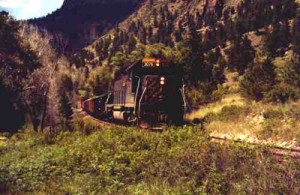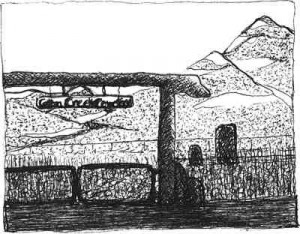Brief by Central Staff
Economy – February 2006 – Colorado Central Magazine
Saguache County made the national rankings in a magazine in late December, but it’s probably not something anybody wants to brag on. It was listed in the Dec. 10 edition of The Economist, a weekly magazine based in England which focuses on “international politics and business news and opinion.”
The article was headlined “The poorest part of America,” and asked “Want to see America’s new ghetto? Follow the Rockies northwards towards the Great Plains.”
Instead of defining poverty by household income, the article used the county residents’ average annual wage. By that measure, Meagher County, Mont., was the poorest in America, at $13,485. Saguache County, the only one listed for Colorado, ranked 14th at $15,189.
Most of the lowest- wage counties were on the northern Great Plains in Montana, Nebraska, and the Dakotas. Two were in New Mexico: Catron, 12th, $14,598, and Sierra, 15th, $15,421.
When this article was first brought to our attention, the immediate response was “Wait a minute. Conejos and Costilla counties are poorer than Saguache. How did they get left out?” But then we noticed that it was about wages, rather than household income, which could include investment returns, rental income, Social Security benefits, alimony payments, and many other forms of non- wage income.
The magazine article focused on Judith Basin County in Montana. We’ve never been there, so maybe the description fit: “This region suffers from ‘the curse of the flat counties.’ It lacks the mountains, rivers or dramatic geography that attract wealthy retirees or budding software entrepreneurs.”
While parts of Saguache County certainly qualify as flat, it also offers an abundance of “dramatic geography” from Crestone to Poncha Pass to Piedra Canyon. As for mountains, there’s the south end of the Sawatch Range, the La Garita Hills, and the north end of the Sangre de Cristo Range, where Saguache County shares three 14ers with Custer County.
But some of the article might fit:
“…the region has plainly failed to adapt to a world in which grain and cattle are cheap. Pioneer mythology has a good deal to do with this….
“Not having a vital urban area also hurts….
“Moreover, the cash is being distributed in an increasingly unequal way….
“The primary difference between this region and other bits of rural America is perhaps denial. Just as rain never did follow the plough, modern jobs do not follow high- cost subsidised food production. The era of the small arable farmer and even of the modest- sized rancher is over….
“Meanwhile, providing this huge, sparsely populated area with services such as health care, schools and transport looks an increasingly expensive proposition for an ever more urban and suburban country.”


